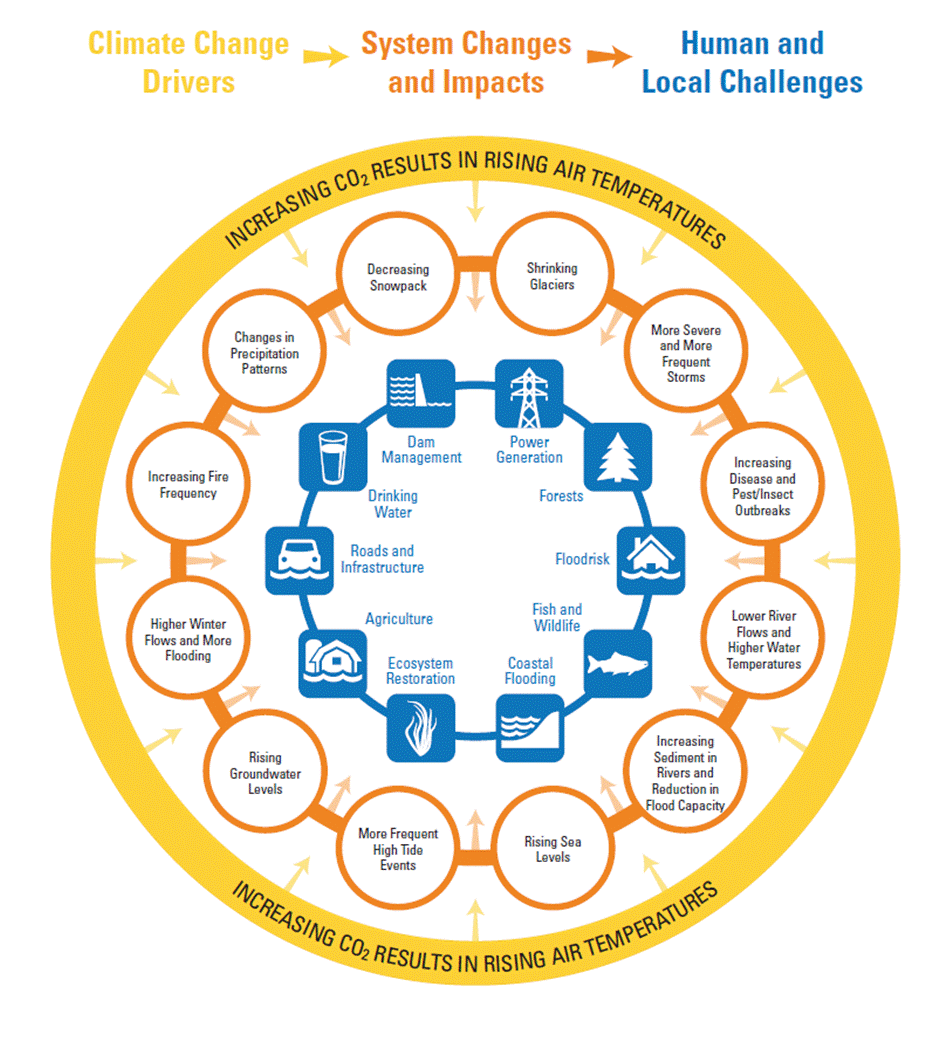Skagit Impacts
The overall consensus among climate scientists worldwide is that the Earth’s climate has changed substantially over the last century and will continue to change in the coming decades as a result of increasing greenhouse gas emissions from human activities. The impacts of a changing climate are being observed throughout the world: global temperatures are increasing, mountain snowpack is declining, habitats and species ranges are shifting, and sea level is rising. Locally, average annual temperature at Sedro Woolley increased 1.6°F (from 1895 to 2010) Source: Office of the Washington State Climatologist, mean sea level at Friday Harbor increased by 4 inches (from 1934 to 2006) Source: NOAA, and the nearly 400 active glaciers in the North Cascades have lost an estimated 50% of glacial mass since the start of the 20th century.
The following webpages provide information for those seeking to understand what may be happening and the implications of those changes on things they care about. The diagram to the right shows various impacts that changes in the climate can have.
Some of the system impacts (sometimes referred to as “climate drivers”) change the underlying systems that humans and other species rely on such as temperature and precipitation, glaciers, hydrology, ocean acidification, sea level rise, ecosystems and sediment. Once these “drivers” are changed, then humans are impacted by changes in drainage, flooding, low flows, dam management for power generation, lake recreation, storm surges and sea water inundation, water supply, natural resource harvest and extraction and other impacts.
More resources on impacts are available on the Educational Resources page.
Human Impacts
Humans and human communities are impacted by changes in temperature and precipitation, glaciers, hydrology, sediment and ecosystems that occur within the Skagit basin. Impacts can be positive, negative or neutral depending on the change. Trends scientists see continuing into the future include:
- Decreases in summer precipitation
- Wetter springs and falls
- Increases in flood frequency
- Increases in flood magnitude
- Changes in timing of water availability
- Decreases in snowpack
- Changes in abundance and distribution of species
- Increases in Skagit sediment loads and changing distribution
- Increases in sea levels or storms
If changes like this were to occur, how might they impact you or your business?
Some key impacts scientists are studying are:
- Low Flows
- Flooding
- Water temperature
- Changes in species and habitat function
- Dam operations for power, lake recreation, salmon and flood control
- Lake recreation
- Storm surges and inundation by rising sea levels
- Drainage
- Water supply
System Impacts
The following webpages highlight key scientific findings or future projections for changes in climate variability, temperature and precipitation, glaciers, hydrology, sediment, snow elevation, forest fires, and sea level rise specific to the Skagit basin.
Work is currently being done to bring more information to the SC2 website concerning ecosystems, ocean acidification, sea level rise, hydrology, sediment, forest fire frequency and other important climate drivers.
Changes in air and water temperatures, the extent of glaciers, the amount and timing of precipitation, the movement of sediment and shifts in ecosystems in turn cause impacts to human communities.


